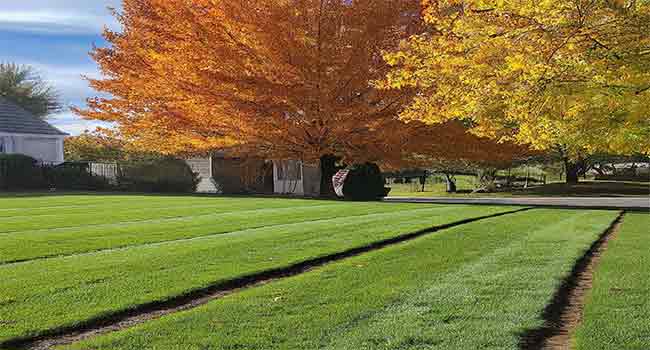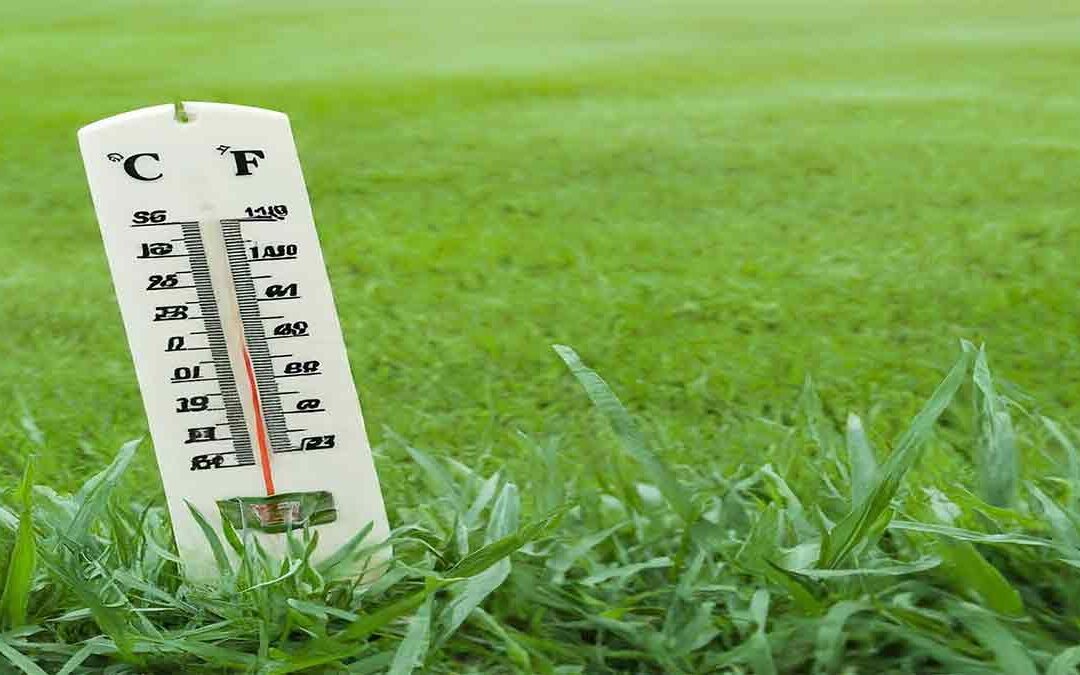Dreaming of a lush, green lawn that’s the envy of your neighborhood? Mastering the art of lawn care isn’t rocket science, but it does require understanding one crucial element: temperature. As Dr. Emily Jones, a renowned turfgrass scientist, puts it, “Temperature is the unsung hero of lawn care. It can make or break your lawn’s success.“
In this comprehensive guide, we’ll dive deep into the ideal temperatures for growing grass, ensuring your lawn thrives regardless of your region or season.
Cool-Season vs. Warm-Season Grasses: Choosing the Right Grass for Your Climate
The foundation of a healthy lawn starts with selecting the right grass type for your climate.
-
Cool-Season Grasses: These thrive in milder climates with moderate temperatures, ideally 60°F to 75°F (15°C to 24°C) during the day and 50°F to 60°F (10°C to 15°C) at night. Popular choices include Kentucky bluegrass, perennial ryegrass, and fine fescue.
-
Warm-Season Grasses: If you live in a warmer region, warm-season grasses are your best bet. They flourish in daytime temperatures of 75°F to 90°F (24°C to 32°C) and nighttime temperatures between 60°F and 70°F (15°C and 21°C). Look for Bermudagrass, Zoysiagrass, and St. Augustinegrass.
Dr. Jones emphasizes, “Matching your grass type to your climate is the first step towards a low-maintenance, thriving lawn.“
Ideal Soil Temperatures for Grass Seed Germination: The Seed’s Wake-Up Call
Soil temperature acts as a thermostat for grass seed, triggering germination when conditions are just right.
- Cool-season grasses: Aim for soil temperatures between 50°F and 65°F (10°C and 18°C) for optimal germination.
- Warm-season grasses: Slightly warmer soil, between 65°F and 75°F (18°C and 24°C), is ideal for these varieties.
A consistent soil temperature during germination is key to a uniform and healthy lawn. A study by Oregon State University confirms the importance of maintaining optimal soil temperatures for successful germination.
Air Temperature and Grass Growth: The Photosynthesis Powerhouse
Air temperature fuels photosynthesis, the process your grass uses to create energy for growth. Warmer temperatures, within the ideal range for your grass type, accelerate this process, resulting in a lusher, greener lawn.
John Smith, a seasoned lawn care professional, shares his insight: “Warmer temperatures, within the optimal range for your specific grass type, accelerate photosynthesis, resulting in faster and more vigorous growth. But remember, extreme heat or cold can stress your lawn, so be prepared to adjust your care routine accordingly.“

Extreme Temperatures: Protecting Your Lawn from Heat and Frost
Extreme temperatures can wreak havoc on your lawn. During scorching summers, cool-season grasses can suffer from heat stress, while frost can damage warm-season grasses in colder climates.
To safeguard your lawn:
- Water deeply and infrequently to promote deep root growth, which helps grass withstand heat and drought.
- Raise your mowing height to provide shade and retain soil moisture during hot spells.
- Apply a stress-relief fertilizer, like Milorganite, to boost your lawn’s resilience to extreme temperatures.
Regional and Seasonal Planting Times: Timing is Everything
The ideal time to plant grass seed varies depending on your region and grass type. Consult the USDA Plant Hardiness Zone Map to determine your zone and tailor your planting schedule accordingly.
- Northern Regions (Cool-Season Grasses): Early spring or fall
- Southern Regions (Warm-Season Grasses): Late spring or early summer
- Transition Zones: Fall for cool-season grasses, late spring/early summer for warm-season grasses
Remember, microclimates in your yard may require adjustments to planting times. Shady areas might stay cooler longer, while south-facing slopes may warm up earlier in the spring.

Measuring Soil Temperature: A Vital Tool for Success
To ensure your soil temperature is in the sweet spot for germination, use a soil thermometer like the Luster Leaf Rapitest Digital Soil Thermometer. Insert the probe into the soil at the depth you plan to plant your seeds and take readings in the morning or late afternoon for the most accurate results.
Troubleshooting Temperature Issues: Expert Solutions
Even with careful planning, temperature-related problems can arise. Here’s what to do:
- Slow Germination: Be patient, cover with burlap, or consider a seedling heat mat for cool-season grasses.
- Heat Stress: Water deeply and infrequently, raise mowing height, and apply a stress-relief fertilizer.
- Frost Damage: If frost is expected, cover your lawn with a frost blanket or burlap to protect it.
Beyond Temperature: A Holistic Approach to Lawn Care
Temperature is just one piece of the lawn care puzzle. Other factors like sunlight, water, soil quality, and proper fertilization are equally important. Consider these additional tips:
- Ensure your lawn receives adequate sunlight. Most grasses need at least 6 hours of direct sunlight daily.
- Water deeply and infrequently to encourage deep root growth.
- Test your soil and amend it as needed to ensure proper nutrients and pH levels.
- Fertilize your lawn according to a schedule recommended for your grass type.
- Aerate your lawn annually to improve soil drainage and reduce compaction.
- Overseed regularly to fill in bare patches and thicken your lawn.
By adopting a holistic approach to lawn care, you’ll create a lush, green lawn that thrives in any season.
Expert Tip: Remember, every lawn is unique. Don’t hesitate to consult with a local lawn care professional for personalized advice and support. They can assess your specific conditions and provide tailored solutions for optimal grass growth in your area.

FAQ
What is the optimal temperature for grass seed to germinate?
Answer: The best temperature for grass seed germination varies depending on the type of grass. Cool-season grasses, like Kentucky bluegrass and fescue, germinate best in soil temperatures between 50-65°F (10-18°C). Warm-season grasses, such as Bermudagrass and Zoysiagrass, prefer slightly warmer soil temperatures of 65-75°F (18-24°C). It’s crucial to monitor soil temperature with a thermometer to ensure optimal germination conditions.
What is the ideal temperature range for grass to thrive and grow?
Answer: The ideal temperature for grass growth also depends on the grass type. Cool-season grasses thrive in daytime air temperatures of 60-75°F (15-24°C), while warm-season grasses prefer 75-90°F (24-32°C). Maintaining these optimal temperatures promotes healthy photosynthesis and lush growth.
When is the best time for planting grass seed to ensure successful establishment?
Answer: The optimal time to plant grass seed varies by region and grass type. In northern regions, early spring or fall is ideal for cool-season grasses, while late spring or early summer is best for warm-season grasses in southern regions. Transition zones offer flexibility, with fall being preferred for cool-season and late spring/early summer for warm-season varieties. Consult the USDA Plant Hardiness Zone Map and local planting calendars for precise timing in your area.
How does temperature influence grass growth and overall lawn health?
Answer: Temperature plays a crucial role in grass growth by directly affecting photosynthesis, the process by which grass converts sunlight into energy. Extreme temperatures, whether hot or cold, can stress or damage grass, leading to issues like dormancy, discoloration, or even death. Proper temperature management is essential for maintaining a healthy lawn.
What steps can I take to protect my lawn from extreme temperatures?
Answer: To safeguard your lawn from extreme temperatures, water deeply and infrequently, especially during hot weather, to encourage deep root growth. Raise your mowing height to provide shade and retain soil moisture. Applying a stress-relief fertilizer can also help your lawn withstand heat or cold stress. Additionally, consider using shade cloth or frost blankets to protect young seedlings from extreme temperature fluctuations.
What are the telltale signs of heat stress in grass, and how can I revive my lawn?
Answer: Wilting, browning, and a dormant appearance are common signs of heat stress in grass. To revive your lawn, water deeply and infrequently, preferably in the early morning to minimize evaporation. Raising your mowing height can also help by providing shade and retaining soil moisture. Additionally, applying a specialized stress-relief fertilizer can aid in recovery.
Can I still plant grass seed if the soil temperature isn’t within the ideal range?
Answer: While not optimal, grass seed may still germinate outside the ideal temperature range, but it will likely be slower and less successful. Using a soil thermometer is essential to accurately monitor the temperature and adjust your planting time if necessary for optimal germination.
How does temperature affect the type of fertilizer I should use on my lawn?
Answer: Temperature plays a significant role in fertilizer selection. During hot weather, slow-release fertilizers are preferred as they release nutrients gradually, preventing burn. In cooler months, winterizer fertilizers help prepare cool-season grasses for dormancy. Consult a lawn care professional or your local agricultural extension for specific fertilizer recommendations based on your grass type and local climate.
What are the recommended watering practices for my lawn during different seasons?
Answer: Watering needs vary throughout the year. During hot weather, water deeply and infrequently, typically once or twice a week, to encourage deep root growth and drought tolerance. In cooler months, reduce watering frequency as the grass’s growth slows down. Monitoring rainfall and adjusting your watering schedule accordingly is essential for maintaining a healthy lawn.
Should I overseed my lawn in the fall, and what temperature is ideal for this process?
Answer: Overseeding your lawn in the fall can be beneficial, especially for cool-season grasses. It helps thicken your lawn and improve its winter hardiness. The ideal soil temperature for overseeding cool-season grasses is between 50-65°F (10-18°C). Be sure to choose a high-quality grass seed blend that is compatible with your existing lawn.
Conclusion
In conclusion, mastering the art of lawn care isn’t just about watering and mowing; it’s about understanding the science behind grass growth, particularly the crucial role of temperature. Whether you’re nurturing cool-season grasses in the Northeast or warm-season varieties in the sunny South, knowing the ideal temperatures for germination, growth, and overall lawn health is paramount.
By following expert advice like that of Dr. Emily Jones and utilizing the resources available from reputable institutions like Rutgers University and the Lawn Institute, you can create a personalized temperature management plan for your lawn. Remember, a soil thermometer is your best friend for monitoring soil temperature, while adjusting watering practices and choosing the right fertilizer based on the season can make all the difference.
Don’t let extreme temperatures sabotage your lawn dreams. By implementing the tips and techniques shared in this guide, you can protect your lawn from heat stress and frost damage, ensuring it remains lush and vibrant throughout the year.
Finally, remember that every lawn is unique. Don’t hesitate to reach out to a local lawn care professional for personalized advice tailored to your specific climate and grass type. With their expertise and your newfound knowledge of grass growth temperatures, you’ll be well on your way to achieving the picture-perfect lawn you’ve always envisioned.

